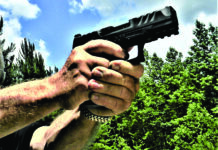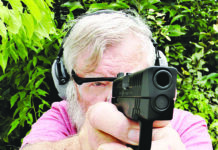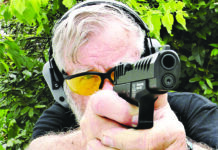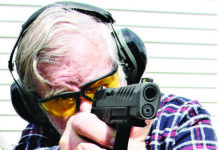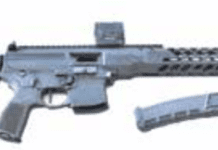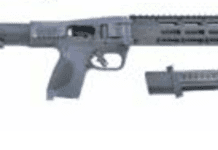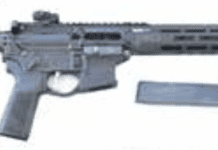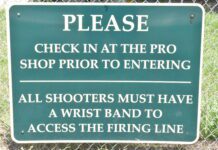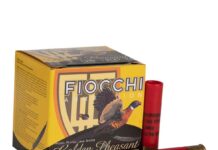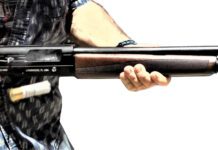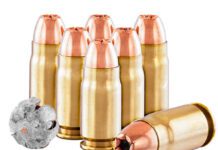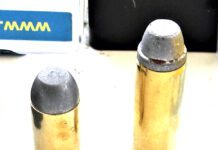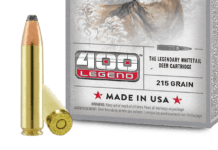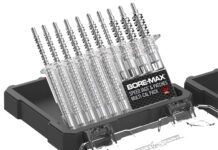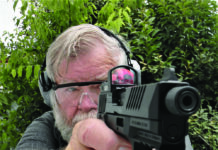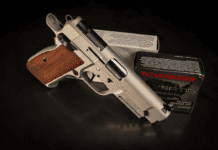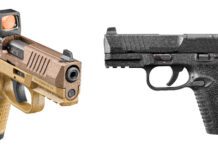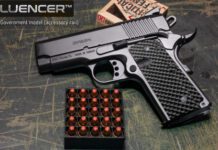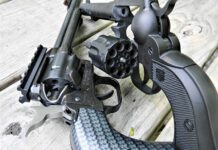Remington 11-87 Police 12 Gauge, $850
Many of the advantages of a tactical shotgun are the same as that self-defense shotgun you might have propped in the corner of your bedroom: devastating firepower, mechanical reliability, ease of use. But your bedroom shotgun and working tactical shotguns do have differences: beefy tactical guns are ready to go on the offensive to serve warrants, root out armed bad guys, and break stuff with either lead or steel.
Trap Shotguns on a Budget: Browning, Ithaca, and H&R
Trap Shotguns on a Budget: Browning, Ithaca, and H&R
Super-Auto Shootout: Benellis SBE II Versus Browning Maxus
It is an old story in the gun business: Fancy new model gets announced; months later prototypes leak out for promotional media testing; then, finally, a year (or two) later, real guns start shipping. And so it is with Browning's Maxus, which was announced in November 2008, with some prototypes available to shoot at the January 2009 SHOT Show in Orlando, and lagging production. Originally slated for late-spring-2009 availability, early-fall delivery has proved to be the case instead—and then, only for the 31/2-inch-chamber models.
The initial offerings of Browning's new-for-2009 autoloader is the matte Stalker style and also a Mossy Oak Duck Blind camo version for $1499 MSRP, both with 31/2-inch chambers. The 3-inch versions are said to be arriving soon—again, in either Stalker matte black or camo for now.
Included in all the "Planet Maxus" hoopla, Browning has made several claims about the Maxus and touted several new features. A few of the features aren't particularly meaningful, so let's dispense with these first. The "Turnkey" quick-change magazine plug is hardly of any use in a dedicated field gun, one directed to waterfowl at that, where three shots (2+1) is going to be it.
Things like shim adjustments for drop are nice to have, of course, and were a bit more remarkable when they appeared 20 years ago. Now, they have become so prevalent that it seems more like a glaring oversight when new autoloaders fail to provide this feature. Naturally, we are glad they are included in the Maxus, but this is no different from many autoloaders. We do note that the Maxus has adjustable length of pull, with the appropriate buttstock spacers included right in the box—not an optional accessory, but already supplied.
Burrowing deeper into the Maxus, Browning has promised us not just cosmetics, but a new gas action and trigger system that moves beyond the similarly weighted Winchester SX3 Composite ($1239 MSRP) and its Browning rendition, the half-pound-heavier Browning Silver Stalker ($1179 MSRP). Rather than an afterthought, the Maxus was designed from the start to be a 31/2-inch gun, and it appears that Browning hopes the Maxus will outscore both the Beretta Xtrema2 and the stalwart Super Black Eagle II.
There are a number of shotguns against which we could pit the new Maxus, but to clean up the field and make the comparisons truly head to head, we chose to bring in an "Our Pick" from the January 2007 issue. There, we tested the Benelli Super Black Eagle II No. 10016 12 gauge, $1515, rating it above the Beretta Urika Optima and Remington 105Cti. Almost three years ago, we wrote of the SBE II, "The latest version of the evolving Super Black Eagle design is a comfortable, ever-functional hunting gun, with the capacity to shoot 23/4-, 3-, and 31/2-inch ammunition." If the Maxus could compete against the SBE II, we reasoned, then its successful launch into the world's autoloading shotgun pool would be assured. Toward that end, we acquired a Benelli Super Black Eagle II No. 10101 Max-4 HD Camo 31/2-inch 12 gauge, $1759, to compete with the Browning Maxus Stalker No. 011600204 31/2-inch 12 Gauge, $1379.
Here's what we found:
Best-In-Class Firearms 2009: Handguns, Rifles, and Shotguns
Best-In-Class Firearms 2009: Handguns, Rifles, and Shotguns
James Debney Named President of S&W Firearms Business Unit
Sturm, Ruger wins 3rd Firearms Manufacturer of the Year Award
Mossberg Persuader Model 590A1 12 Gauge Magnum No. 51411
Semiauto 12 Gauges: S&W Edges Browning and Winchester
Back-to-the-basicsshotguns featuring black composite stocks and forearms fill a special niche in the world of scattergun enthusiasts. These firearms are picked for their ability to serve as a shooting tool that can withstand rugged hunting conditions and not with a lot of attention to appearance. They also eliminate the possibility of a flash of sunlight glinting off a shiny stock or barrel and alerting incoming waterfowl of potential danger.
Most of the major manufacturers offer at least a few of their shotgun models featuring composite stocks and forearms and non-glare barrels, and a variety of the shotguns make their way to the used gun racks where shooters are looking to pick up a bargain.
The three used composite semiautomatic shotguns we gathered for our test included the Smith & Wesson Model 1012, $630; the Winchester Super X Model 2, $600; and the Browning Gold Hunter, $700. While the trio's prices are probably in the moderate-to-high-end range for a used semiautomatic, we picked them as a good representation of how composites compared in the field and on the range.
The Winchester Super X2 is the same model reviewed by Gun Tests in March 2004, when it was pitted against a Mossberg 935. The Winchester was our pick in that match-up. In addition, we looked at a Super X3 versus a Benelli M2 in November 2007 and also gave the Winchester model a thumbs up in that comparison. In both cases, we were pleased with the Winchester's handling ability; functioning features; and the speed of the action over the other shotguns in those tests.
This latest match up involved two more recent introductions into the composite stock and forearm world of shotguns, and we were interested in determining how the veteran Winchester would fare.
To check out the shotguns in a variety of shooting situations, we selected the following test ammunition:
For clay targets, we used Winchester AA Light Target 23/4-inch loads with 11/8 ounce of No. 8 shot and an average muzzle velocity of 1145 fps; and Winchester Super Sport Sporting Clays 23/4-inch loads with 11/8 ounce of No. 71/2 shot and an average muzzle velocity of 1300 fps. It should be noted that none of the three shotguns would function well with the light target loads, resulting in numerous failures to feed a second shot. These shell-feeding problems were eliminated when we switched to the hotter sporting clays shells.
For the patterning tests, we selected Federal Steel Duck and Pheasant 3-inch loads with 1.25 ounces of BB shot and a muzzle velocity of 1300 fps. No functioning problems were encountered with any of the shotguns when firing the 3-inch shells.
We also function-fired several 31/2-inch shells, Estate High Velocity Magnum Steel with 13/8 ounces of No. 4 shot and an average muzzle velocity of 1,500 fps. We wanted to see how the Browning and Winchester would handle the heavy loads. The Smith & Wesson is limited to no more than 3-inch shells.
While there were no functioning problems, there was quite a bit of shoulder shock when firing the 31/2-inch loads in the Browning. Probably because of the Winchester's heavier weight, there was no appreciable difference in recoil between 3-inch and 31/2-inch loads. However, we were happy to limit our practice time with the big shells to only a few rounds.
We were generally pleased with the way all three of the shotguns could be moved onto targets on the clays course and with the trio's patterning performance using steel shot on paper targets set at a range of 30 yards.
Details of how each shotgun performed at the clay target range and patterning field follows in our report:
Mossberg SA-20 No. 75771 3-Inch 20 Gauge
One of the major reasons hunters choose a 20 gauge over a 12 gauge is the former's smaller frame, weight, and recoil. Though they may already own a 12, many field sportsmen wind up reaching for their 20s because the smaller gun is just easier to handle, and there are just a few hunting situations—layback goose hunting and spring turkey hunting, to name two—in which the bigger payload might make a difference.
One 3-inch-chamber 20 gauge we recently tested was the Mossberg SA-20 No. 75771, $496. The Mossberg is a new-for-2008 line for that company, so the SA-20 designation names just a single chambering, as you might expect. However, comparable guns in the 930 autoloader line, which are chambered only for 12 gauge, weigh 7.75 pounds to the SA-20's feathery 6.0 pounds.


